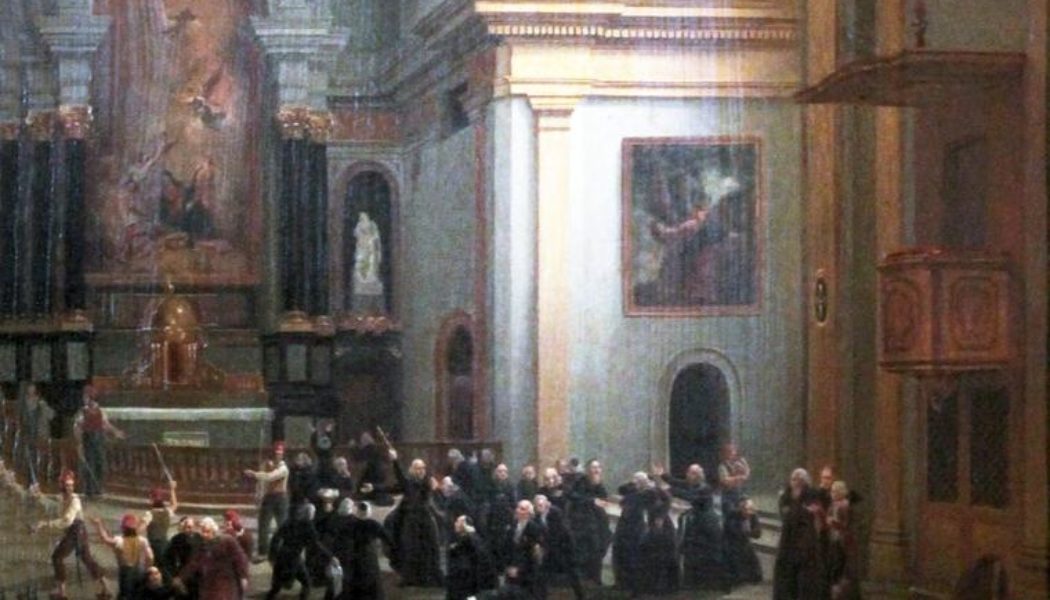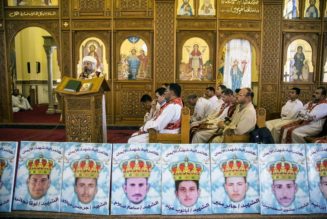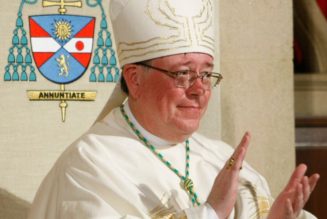
SAINTS & ART: Pope Pius XI beatified Grasset in 1926, making him the first person born in what is now Canada to be so honored.
The Church’s job is to “make saints,” not so much to canonize them as to prepare every human person to “know, love, and serve God in this life and be happy with him in the next.” Obviously, the number of saints in heaven far outstrips the number the Church can honor in her liturgical calendars. Some may not be honored by the Church worldwide but are honored on national liturgical calendars.
Blessed André Grasset de Saint-Sauveur is one such person, with an optional memorial Sept. 2 in Canadian dioceses. He was a 34-year-old martyr priest.
Canada claims him as its first beatified though, truth be told, Grasset spent most of his life in France. His Canadian connection comes from birth: he was born in Montréal in 1758.
His father had come to what was then “New France” as a secretary to the Governor General. These were, however, the years of the Seven Years’ War, an 18th-century world war between England and its allies on one side and France and its allies on the other. The conflict had its North American theaters and often goes in U.S. history under the name of the “French and Indian Wars.”
The most important battle in the North American campaigns was the Battle of the Plains of Abraham, outside Québec City in September 1759. The British victory there set the stage for its eventual takeover of Canada under the terms of the Treaty of Paris of 1763, by which France ceded most of its North American possessions to England. (Arguably, it also contributed to the American Revolution, as New England Protestants feared London might be willing to accommodate Catholic Québec at their expense. It also contributed to the ongoing French/English division in Canada.)
When New France ceased to be French, Grasset’s father decided to return with his family to France. Grasset grew up there, entering seminary and being ordained in 1784. He was ordained five years before the outbreak of the French Revolution.
After the French Revolution broke out, it quickly turned anti-Church and anti-clerical. By 1791, the French regime demanded all priests sign a loyalty oath to the state, which included rejecting the authority of the Pope. Clergy would become state employees in an independent national church. Grasset, like most French priests, refused. He sought refuge with the Eudist Fathers, an order founded by the French saint, John Eudes.
In August 1792, mass arrests of clergy took place. Grasset, along with others, were imprisoned in a former Carmelite convent, now the Carmes Prison. Starting the first week of the next month, in what history calls the “September Massacres,” each of the three bishops and 92 priests were subjected to “trials” in which, upon their refusal to sign the oath, they were summarily convicted. They were then pushed out a door and down a flight of stairs to executioners waiting at the bottom with pikes, bayonets, knives and swords to gouge the “convicts” to death.
During the first week of September 1792, almost 1,500 people were murdered.
Pope Pius XI beatified Grasset in 1926, the first person born in what is now Canada to be so honored.
A state that insisted it would produce a national church that would go its own way, independent of the Holy See. 231 years later, Blessed André Grasset would find the world hasn’t much changed: plus ça change …. 231 years later, our world continues to find the heroic witness of Blessed André Grasset amazingly relevant to our times.
Marie-Marc Antoine Bilcocq captured the martyrdoms of the September Massacres in his “Massacre des Carmes” [The Massacre at the Carmelites], a painting dating from around 1830. The former monastery is shown as a prison, where the priest victims are being progressively hacked to death by the revolutionaries. The revolutionaries stand in front of the altar, their blades in hand, one near the altar rail directing the next victim to his martyrdom. On the left is an older bishop, his one hand grasped by a priest who kisses his ring, while behind his back is a revolutionary with clearly an appetite to dispatch this “big fish.”
While our language has preserved the word “sanctuary” to designate a place of refuge which, once upon a time, every church was, it’s clear here that — not for the first or last time — petty Caesars have decided real sanctuaries are not among the things of God they will respect. Of course, besides perpetrating murder in churches, the French Revolutionaries demonstrated their ultimate contempt for sanctuaries when they laid a Parisian prostitute on the altar of Notre Dame as their “goddess of reason.”
[For more on Blessed André, see here.]






